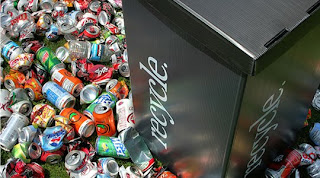
As Homecoming programming (i.e. tailgating) and general festivities get both students and alumni "trashed," they also trash the campus itself.
This past weekend, while I was talking with our campus Recycling Director, Bill DelVecchio, about the current and coming changes to recycling on campus, my dismay with the state of event management on campus was further increased.
During Homecoming, a time during which (one can easily infer) many beverage cans are produced, no recycling could be done because of contamination. Two loads (equivalent to TWO FULL TONS) of recycling had to get "trashed" because of this.
Although Homecoming is, by all means, a unique event, it also reflects a systemic problem in the way that events are run on campus. How many events provide bottled water for attendees? Overpackaged sandwiches from the Corp? Even still, how often do these events offer recycling facilities for the disposal of this waste? Not that often, for sure.
Systemic problems need to be addressed with systemic changes, and the paradigm with which we plan our events, both big and small, on campus needs to change. Zero-waste? Carbon-neutral? These are the types of events that we should be having. We, no doubt, have the resources and the brains to do it.
The photo above comes from the official Homecoming 2009 website.






